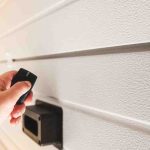
Learn How To Replace Piping Under Kitchen Sink
Table of Contents
ToggleA DIY Guide: How to Replace Piping Under Your Kitchen Sink
Materials and Tools You’ll Need
Before you start, gather the following materials and tools
- Pipe wrench
- Adjustable wrench
- Plumber’s tape
- Plunger
- Bucket or towels (for water cleanup)
- New piping kit (P-trap and other necessary fittings)
- Pipe cutter or hacksaw
Step 1: Turn Off the Water Supply
Begin by turning off the water supply to the sink. Locate the shut-off valves under the sink or, if necessary, shut off the main water supply to the entire house. Open the faucet to relieve any pressure in the pipes.
Step 2: Clear the Area and Place a Bucket
Clear out the cabinet beneath the sink and place a bucket or towels to catch any water that may spill during the replacement process.
Step 3: Disconnect the Existing Pipes
Using a pipe wrench or adjustable wrench, disconnect the nuts that connect the existing pipes. Start with the P-trap, which is the curved pipe beneath the sink. Be prepared for some water to drain out as you remove the pipes.
Step 4: Remove the Old Piping
Once the P-trap is detached, remove the remaining sections of the old piping. Inspect each piece for damage or corrosion, as this may be the cause of the leak.
Step 5: Measure and Cut New Piping
Measure the length needed for each section of the new piping, including the P-trap. Use a pipe cutter or hacksaw to cut the pipes to the appropriate lengths.
Step 6: Install the New Piping
Starting with the P-trap, begin installing the new piping. Use plumber’s tape on the threads of each connection to ensure a watertight seal. Tighten the nuts with a wrench but be cautious not to overtighten, as this may damage the fittings.
Step 7: Check for Leaks
Turn the water supply back on and check for any leaks. Run water through the sink and inspect all connections for signs of dripping or moisture. If you notice any leaks, tighten the connections accordingly.
Step 8: Cleanup
Once you’ve confirmed there are no leaks, clean up the area beneath the sink, and replace any items you removed during the process.
FAQs
How can I identify a leaking pipe under my kitchen sink, and is it necessary to replace it?
Signs of a leaking pipe include water puddles or dampness beneath the sink. If left unaddressed, leaks can lead to water damage and mold. Replacement is often necessary, and you can do it yourself by following a step-by-step guide, ensuring a prompt and cost-effective solution.
What tools do I need to replace piping under my kitchen sink, and is it a DIY-friendly task?
You’ll need basic tools like a pipe wrench, adjustable wrench, and plumber’s tape. This DIY-friendly task involves turning off the water supply, disconnecting and replacing the damaged piping, and checking for leaks. It’s a manageable project for those comfortable using tools.
Can I use the existing piping under my kitchen sink, or is it recommended to replace it entirely?
If the existing piping is damaged, corroded, or causing leaks, it’s advisable to replace it entirely. Using new piping, including a P-trap and necessary fittings, ensures a reliable and leak-free system. Regular inspection and timely replacement contribute to the overall health of your plumbing.
Final Thought
Replacing piping under your kitchen sink may seem daunting, but with the right tools and careful steps, it’s a manageable DIY project. By following this guide, you can address leaks promptly, preventing further damage and ensuring a smoothly functioning kitchen sink. Remember, if you’re ever uncertain or uncomfortable with the process, it’s always a good idea to consult with a professional plumber.





